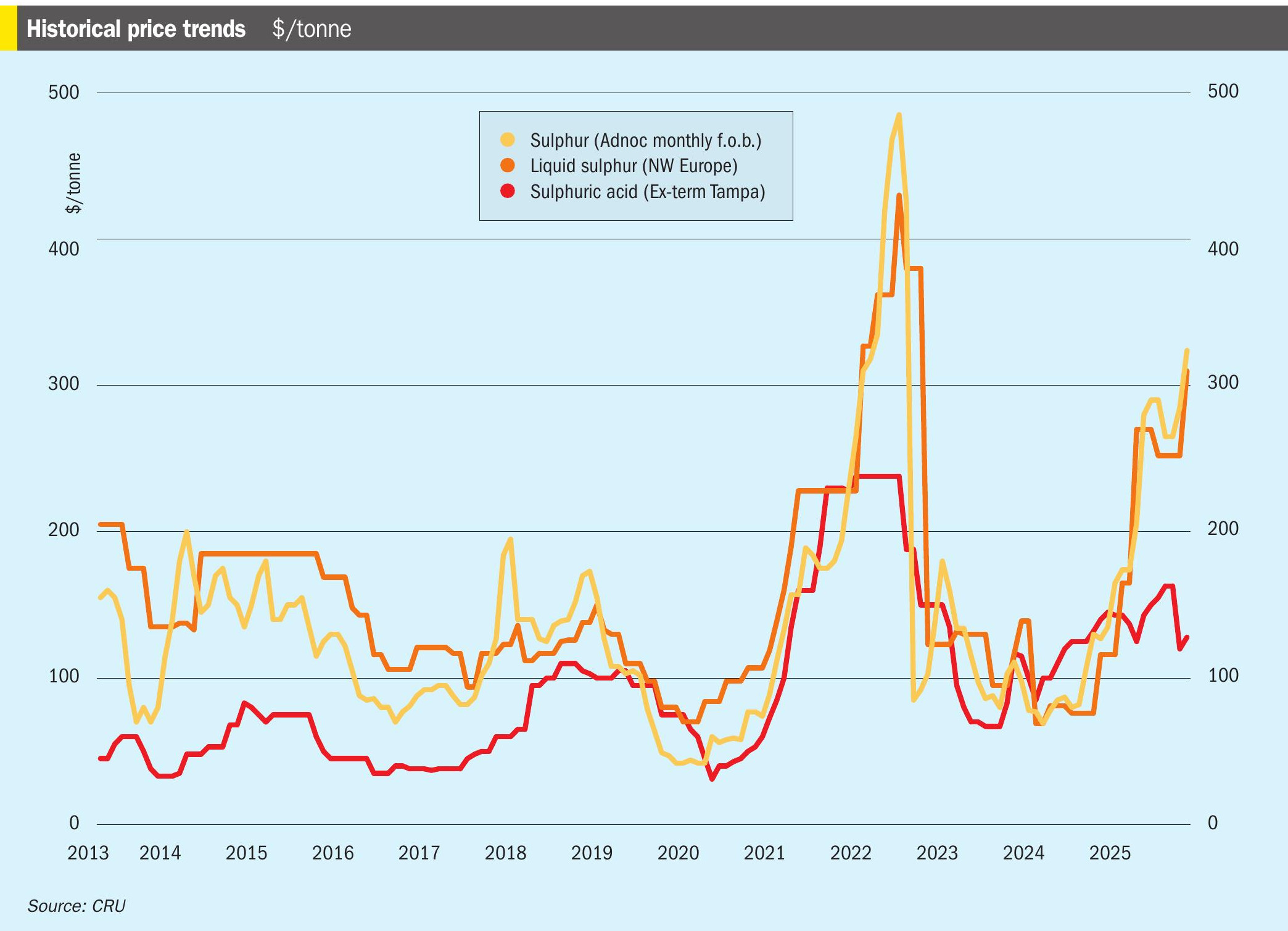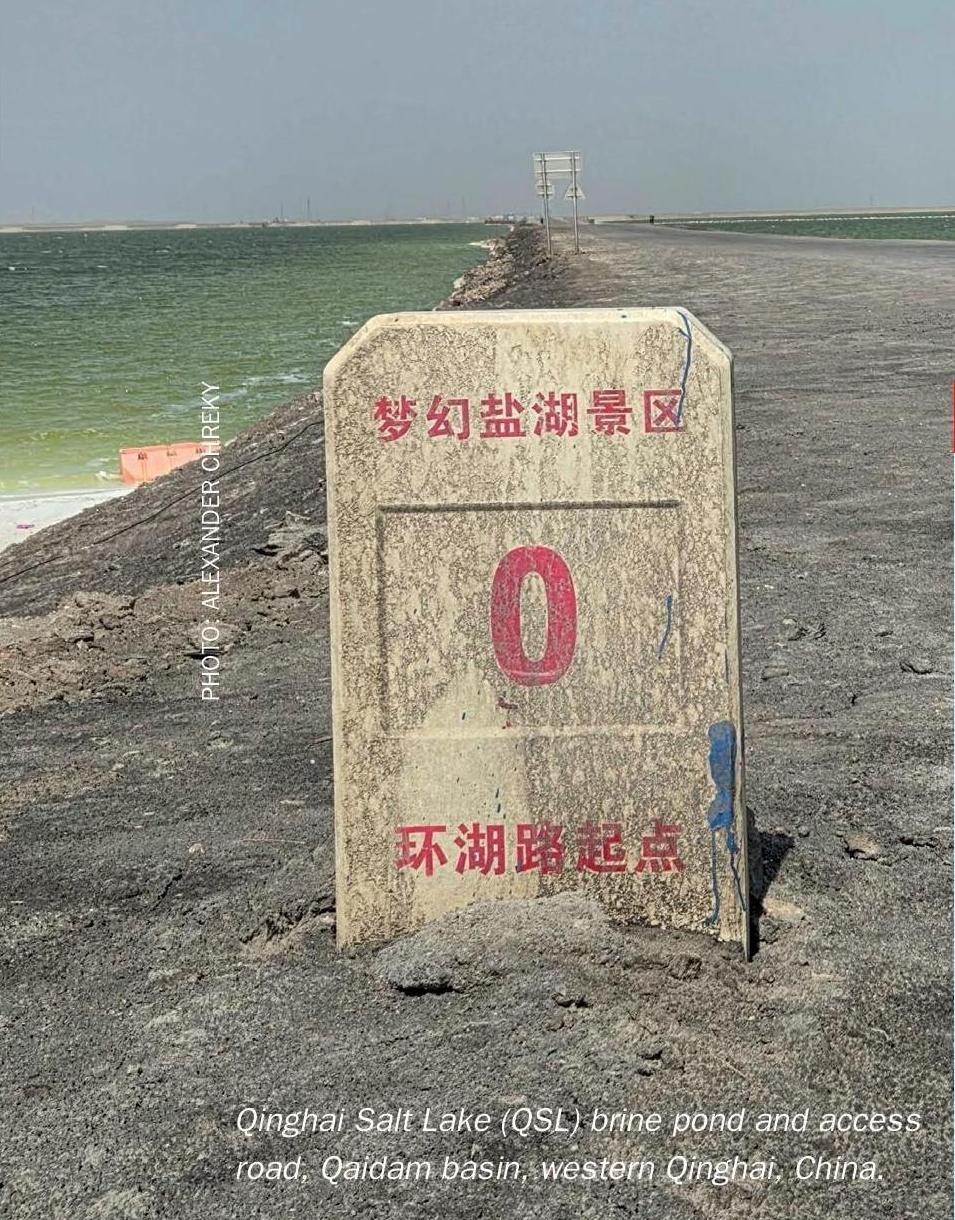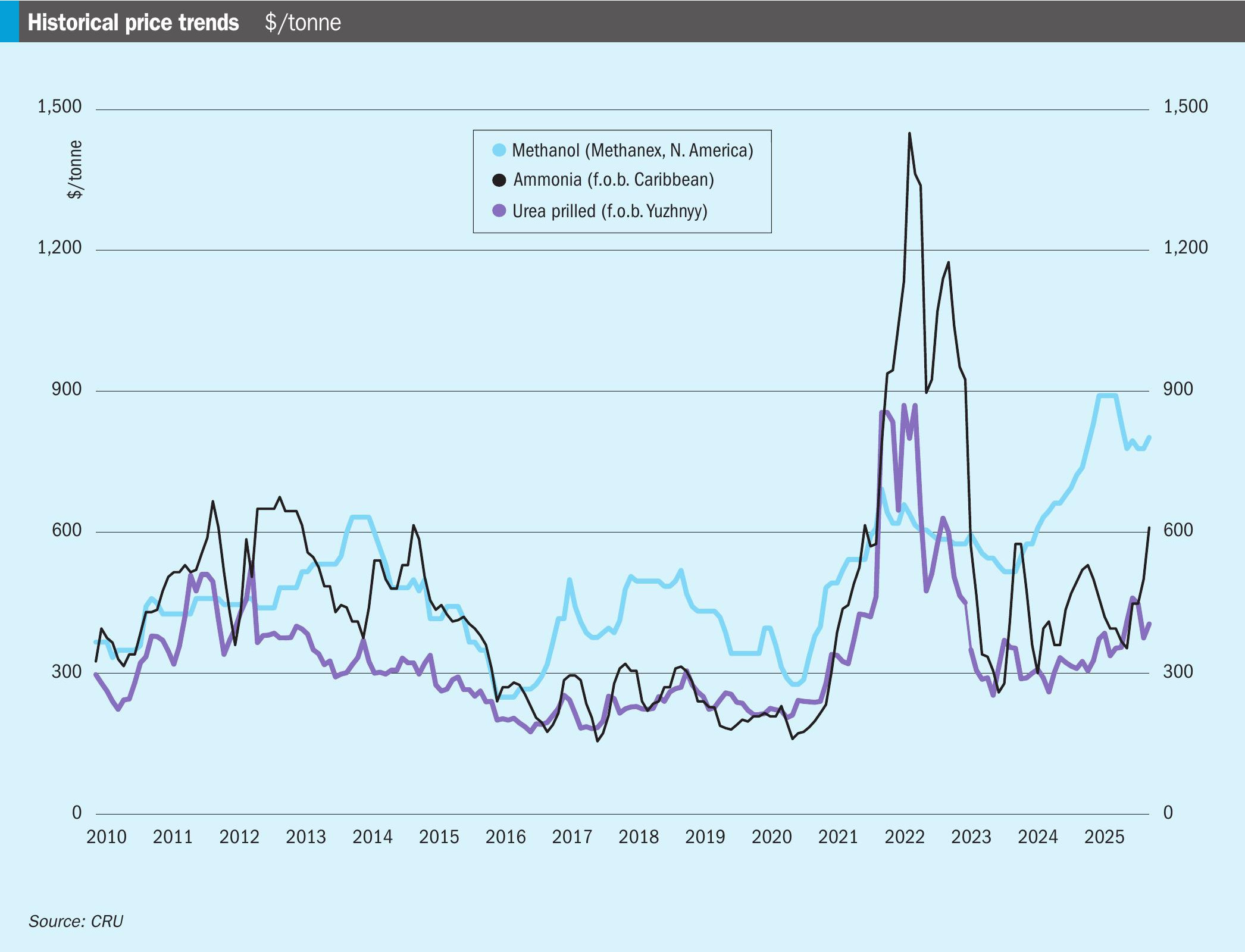Fertilizer International 498 Sept-Oct 2020

30 September 2020
Market Insight
Market Insight

Market Insight courtesy of Argus Media
PRICE TRENDS
Urea: Record Indian demand has driven up prices since May. India has issued four urea tenders in the past two months to meet a 48 percent rise in April-July sales, equivalent to 3.7 million tonnes.
The strong demand pull from India has singlehandedly lifted the whole urea market. Egyptian granular urea prices have risen from a low of $205/t in May to $280/t f.o.b. in early August, while Middle Eastern granular urea has moved up from $210/t to $270/t f.o.b. over the same period. Even third-quarter Chinese urea prices – which normally ease at the end of the domestic summer season – have instead increased to $270/t f.ob.
Prices have also moved up in Brazil. This market, which is the main focus in the west, has seen increases of $60-70/t since early June. Brazilian buyers have had few options but to pay up, given the onset of the peak period for shipments and competition for tonnages from India.
Some market buying from Egypt and Algeria has also taken place. This was to cover short positions taken by some traders for July-September shipment to Europe, these risking significant losses for those affected.
Phosphates: DAP and MAP markets have been firm since the start of June, in both the east and west, underpinned by strong demand from India and Brazil. News of Mosaic’s bid to block Russian and Moroccan phosphate imports also lifted North American DAP and MAP prices.
Indian DAP demand has been boosted by near-record kharif season planting. Consequently, prices have risen by around $15/t since mid-June to around $330/t cfr. India’s strong agricultural fundamentals, plus an above-average monsoon season, have been the main underlying factors. A private sector tender placed by neighbouring Bangladesh, meanwhile, has provided an outlet for 600,000 tonnes of DAP, with half of this being supplied by China.


West of Suez, Brazilian MAP prices have risen by around $25/t since mid-June to the low-$340s/t cfr. Prices have been supported by demand for September soybean planning and accompanying predictions of the second-highest ever soybean export total in 2020 (80 million tonnes). The possible lockout of Russian and Moroccan imports has pushed up US domestic prices. DAP barge prices have risen by $50/st since mid-June to $325/st f.o.b. Nola. OCP seems to be more wary of the US market already, having shipped far more DAP east of Suez so far this year compared to last.
Potash: Limited demand has left potash prices flat-to-soft in most key markets since the beginning of June. Brazil was the exception with prices there holding firm.
June brought several dips in Southeast Asian MOP prices, for example, as distributors and traders competed for sales in Malaysia, Vietnam, and Indonesia. This was followed by further price decreases in July. Oversupply and lacklustre demand saw granular MOP fall by $5/t in Thailand/ Vietnam to finish July at $255-265/t cfr. Prices for standard MOP in Southeast Asia also fell by $3/t through July, ending at $230-242/t.
There were also slides in the US thanks to heavy competition. This caused f.o.b. Nola prices to fall from $198-205/st to $189-195/st during the course of June. In Europe, following falls in early July, granular MOP prices fell again at the start of August, down to e230-240/t cfr, due to buyer uncertainty. Australian and South African cfr prices for granular MOP have also softened since the end of June.
Brazilian prices for granular MOP, meanwhile, bucked the trend. These recorded consecutive rises in late June and early July, moving up to $235-240/t cfr where they have remained since.
Sulphur: An east/west divide in the market became increasingly apparent during June and July. Prices trended flat-to-soft in markets east of Suez, as there was no shortage of tonnages and buyers lacked enthusiasm for product. In the west, meanwhile, supply tightness continued as buyers looked to lock-in third-quarter cargoes.
OCP has been behind the increased availability in the east. The Moroccan phosphate giant pushed back on some of its usual contracted volumes because of healthy inventories and discharge line-ups. Appetite for these extra Middle Eastern tonnages was limited due to the approaching summer and limited demand from some regions because of the coronavirus pandemic. Across eastern markets, lacklustre demand, coupled to better-thanexpected availability, pushed down prices to the low-$70s/t cfr by mid-July.
The west, in contrast, has seen f.o.b. and cfr prices hold broadly stable. With coronavirus cutting demand for refined products, US production has been reduced to just half of normal capacity in key refining and sulphur-producing regions. US supply tightness has been compounded by FSU supply reductions, most notably the extension of Kazakhstan’s Opec+ compliance period to September. Despite the general supply-side tightness, elevated Middle East availability – and overall hesitancy on the buy-side – has kept a ceiling on west of Suez pricing and prevented f.o.b. and cfr price run-ups.
OUTLOOK
Urea: Indian demand will continue to support the urea market through the remainder of the third-quarter. But a correction to rapid price rises is possible, eventually, if Indian buying slackens in the fourth-quarter. Buyers in other markets are also starting to resist continually rising prices. Indeed, recent business has seen traders taking long positions in preference to making cfr sales.
Phosphates: Argus predicts a tight DAP and MAP market through the remainder of the third-quarter, with prices moving up accordingly. Supply-side issues in Tunisia will also have a short-term firming effect. The upward price impetus is only likely to slow when the market moves into surplus in the fourth-quarter.
Potash: European price levels look vulnerable currently. MOP prices in Thailand and Vietnam, in contrast, should benefit from a fertilizer demand boost in the region linked to healthy seasonal rainfall. Brazil is set to remain steady for the time being, while autumn demand in the US should spur price rises there.
Sulphur: Market prices are expected to remain broadly stable for the remainder of August, as buyers and sellers are in no hurry to trade. Shipments this month should also be absorbed by contracts and previously concluded spot deals. However, with key buyers already holding healthy inventories, some softening is widely expected when cargoes for September loading are offered to the market. n





